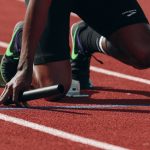As any experienced rider can attest, horse riding is far more than a leisurely pastime. It’s a physically demanding sport that requires a level of fitness and strength from riders. More importantly, it demands a specific kind of fitness that’s tailored to the unique needs of the rider. One of the key aspects of good horse riding is maintaining the right posture. This article will guide you through the process of adjusting your fitness routines to help improve your riding posture.
Understanding the Importance of Posture in Horse Riding
Before we delve into the details of specific exercises and training methods, it’s crucial to understand the role posture plays in horse riding. Good posture isn’t just about looking confident and composed in the saddle; it’s a vital part of the communication between the rider and their horse.
This might interest you : In-depth tests of running shoes and trail shoes for you
When your posture is correct, you’re in a better position to guide your horse, react quickly to its movements and maintain your balance. However, achieving the right riding posture is not just about sitting up straight. You need lower body strength to grip the horse, core strength to maintain your position, and upper body strength to control the reins and guide the horse.
Tailoring Your Fitness Routine to Improve Core Strength
Core strength is perhaps the most crucial aspect of horse riding fitness. A strong core will help you maintain the correct riding posture, even when your horse is moving at high speeds or over uneven terrain. So, how do you develop a strong core that’s tailored to the needs of horse riding?
Also read : What are the best strategies for pacing during a multi-day sports event?
There are several exercises that can help you build core strength specifically for horse riding. Pilates, for example, is a form of exercise that focuses on improving core strength and flexibility. Pilates exercises, such as the hundred, the roll-up, and the teaser, can help strengthen your core muscles and improve your balance.
Similarly, yoga poses like the plank, the boat pose, and the warrior pose can also help improve your core strength and balance. Other core-strengthening exercises such as crunches, leg raises, and Russian twists can also be beneficial.
Building Lower Body Strength for Better Leg Grip
The legs play a crucial role in horse riding. They help you grip the horse, control its speed, and steer its direction. Therefore, building lower body strength is another key aspect of horse riding fitness.
To improve your leg grip, incorporate exercises like squats, lunges, and calf raises into your fitness routine. These exercises strengthen the muscles in your thighs, calves, and glutes, improving your ability to grip the horse with your legs.
Another useful exercise is the horse stance. This is a martial arts exercise that involves standing with your feet shoulder-width apart, then squatting down like a sumo wrestler. This exercise is great for strengthening the muscles around your hips and thighs, improving your riding posture and leg grip.
Enhancing Upper Body Strength for Better Control and Guidance
While the core and legs might be the primary focus of your fitness routine, don’t neglect your upper body. The muscles in your arms, shoulders, and back are crucial for controlling the reins and guiding your horse.
Incorporate exercises like push-ups, pull-ups, and rows into your fitness routine to build upper body strength. Similarly, resistance band exercises can be particularly effective at targeting the specific muscles used in riding. For instance, seated rows mimic the action of pulling on the reins, helping to strengthen the muscles you use most during riding.
Incorporating Flexibility and Balance Exercises into Your Routine
In addition to strength, good riding posture also requires flexibility and balance. Yoga and Pilates can again be beneficial here, as they both improve flexibility and balance. Other exercises like leg swings, hip circles, and ankle rolls can also help.
Balance exercises, such as standing on one foot or using a balance board, can also be beneficial. They help your body learn to adjust and maintain balance, even in changing conditions – a skill that’s particularly useful when you’re on the back of a horse.
Remember, improving your riding posture isn’t something that will happen overnight. It takes time, dedication, and consistency. But by tailoring your fitness routine to the unique demands of horse riding, you can make significant improvements in your riding posture and overall performance.
Incorporating a Range of Motion Exercises for Improved Riding
As a horse rider, range of motion exercises should be a key component of your fitness routine. These exercises not only help improve flexibility but also aid in maintaining an ideal riding posture. By improving your range of motion, you can effectively communicate with your horse, maintain balance, and effortlessly control the reins.
To enhance flexibility and range of motion, you can incorporate various stretches into your workout routine. These include neck stretches, shoulder stretches, and chest stretches, which will help relieve tension in your upper body. For your lower body, hamstring stretches, hip stretches, and calf stretches can be particularly beneficial.
Swimming is another activity that can significantly improve your range of motion. It involves the movements of all muscle groups, thereby enhancing your overall flexibility. Yoga and Pilates, as stressed earlier in this article, are also excellent for increasing flexibility and improving your riding posture.
Range of motion exercises are especially important for equestrian athletes, as they often participate in events and are ranked based on their performance. A flexible and agile body will help these athletes achieve higher rankings in events, making these exercises an integral part of any serious rider’s fitness regimen.
Horse Care and Its Impact on a Rider’s Health and Fitness
As a rider, your fitness is undeniably important. However, the care you provide for your horse can also significantly impact your riding performance. By ensuring your horse is well taken care of, you can enhance your physical relationship with your horse, thereby improving your riding posture and overall equestrian fitness.
Firstly, a well-cared-for horse is likely to be more responsive to your movements and signals. This responsiveness can make it easier for you to maintain your balance and grip. Secondly, a healthy horse is less likely to behave unpredictably, reducing the risk of injuries that could set back your fitness progress.
Regular grooming, including brushing and washing, will keep your horse’s coat in the best condition. This process can also count as an additional workout, engaging your core, upper body, and lower body muscles. Feeding, watering, and mucking out stalls are other tasks that can contribute to your rider fitness.
Conclusion
Improving your riding posture is a journey that requires dedication, consistency, and a well-thought-out fitness routine. It’s about more than looking good on the back of a horse; it’s about efficient and effective communication with the horse, maintaining balance, and controlling the horse’s speed and direction.
As you tailor your fitness routine for horse riding, remember to focus on building core strength, lower body strength, and upper body strength. Incorporate a range of motion exercises for flexibility and balance. Don’t overlook the importance of caring for your horse and how it can help improve your equestrian fitness.
Whether you’re an amateur horse rider or partake in events as an athlete, these fitness tips will help you improve your riding posture and overall performance. With time and consistency, you may even see your rankings in horse riding events improve. The journey to better riding posture isn’t always easy, but it’s certainly worth the effort.
















